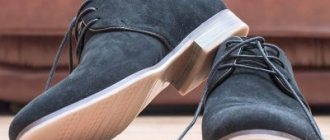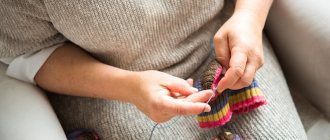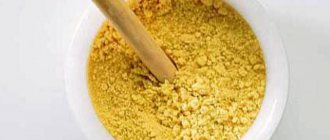Suede is a natural or artificial material that is distinguished by its thinness, softness and velvety feel. It is widely used for making clothing. Due to its strength, moisture resistance, and hypoallergenicity, it is used for sewing fashion items, jackets, coats and accessories. There are some nuances that should be taken into account when caring for the material.
How to wash faux suede clothes
Even experienced housewives have a question: is it possible to wash artificial suede in a washing machine along with other things. The answer is no. You cannot wash a dress made of faux suede in a machine as usual, as the fabric quickly loses its appearance. All the rules of natural suede also apply to artificial fabric. How to wash faux suede?
- Machine washing should be done on a modern washing machine, at a temperature of 30 degrees, in the “manual” mode for delicate fabrics.
- The "spin" and "dry" functions must be disabled.
- It is better to wash faux suede dresses by hand, using the same mild detergents as when washing items made from natural fabric.
- It’s even better to use a mild solution of laundry soap to clean the surface of the dress. Apply warm soapy water to the cloth, wipe the contaminated areas separately with a sponge, and rinse off the foam with clean running water.
- Products made from artificial materials are dried just as carefully as those made from natural materials.
How to properly bleach white clothes at home
Washing suede products at home
Natural suede is considered the most expensive. It is obtained from the skins of small livestock by tanning using fats and formaldehyde. The natural material is very durable and can withstand many washes.
Faux suede is a completely different matter. High-quality fabric (for example, Alcantara) is also not damaged by moisture and friction. Opinions differ on whether inexpensive suede can be washed. It is better not to wet some types of fabric at all, while others should be carefully washed by hand. The appropriate care regimen for your clothing is usually indicated on the label.
Washing methods
There are several methods for washing suede products: steam, hand and machine wash.
Washing suede by hand
Washing a suede dress (as well as a skirt, jacket, shoes) at home is difficult. The easiest way out is to take your soiled outfit to the dry cleaner. But you can wash the product yourself. It is best and safest to do this manually, following certain rules.
- When washing suede items, do not soak the items for a long time.
- You need to wash suede quickly, minimizing the time of active exposure of the suede to detergents and water.
- The dress is washed separately from any other items.
- Washing is done in a large basin or in a bathtub.
- The water temperature should not exceed 30 degrees.
- The detergent must be completely dissolved, eliminating the appearance of flakes or lumps.
- The suede dress is immersed in soapy water and treated with a soft sponge or brush.
- During washing, rough friction, strong compression or other deformation of the fabric should be avoided.
- The suede product is allowed to drain at the bottom of the bathtub or basin, the water is drained, then rinsed in running water several times until the water becomes absolutely clean and transparent.
- At the end of the wash, add 1 tablespoon of vinegar or 1 teaspoon of ammonia to the water.
Hand washing will perfectly remove dirt from a dress made from natural suede or velor, or from artificial substitutes. Using this method, you can easily clean suede clothing with a synthetic, silk or cotton lining.
Machine
It is better to avoid machine washing, preferring hand or regular dry cleaning. But if you decide to resort to this method of washing, you should follow several rules:
- Before washing a suede product in a drum machine or machine, read the label and make sure whether it can be washed in this way.
- It is recommended to wash suede dresses only in machines of the latest generations, with the least “traumatic”, the most gentle mode for especially delicate fabrics - for example, the “Hand Wash” mode.
- Machine washing will require a special detergent for “finicky” suede. You shouldn’t save money and choose “cheaper” ones so as not to spoil your favorite thing.
- The temperature for heating water in the machine should not be higher than 40 degrees, or better yet 30.
- It is better to turn off the “Spin” function and not use it, but dry it as if by hand, laying it on sheets or hanging it on a wardrobe hanger with sloping shoulders.
Steam cleaning
A suede dress or other items made from this material can be cleaned using hot steam. This procedure will be very easy if there is a steam generator in the house. It is enough to direct a stream of steam at the dirt or worn-out shiny area of the fabric, and then follow the steam treatment over the surface of the contaminated fabric with a special rubber brush for cleaning suede, velor, corduroy, and velvet.
If there is no steam generator, you will have to hang the dress over a pan of boiling water or use an iron with a “vertical steam” function. After steaming, smooth out the pile in shiny areas.
Know the differences between synthetic and natural materials
Knowing how it is made will help you care for suede.
Natural suede
The following skins are used to make natural materials:
- sheep;
- young pigs;
- calves;
- deer;
- goats;
- chamois
Natural suede is used to make beautiful but difficult to care for items - clothes, shoes, bags.
For tanning leather, vegetable oil or seal oil, fish oil, and bone oil are used:
- The skin, freed from wool, is smeared with one of these compounds and sent to a chamber, where the skin is soaked in it for about a day.
- When oil penetrates deep below the surface of the skin, it wrinkles. During the operation, a short pile rises on the front side of the material.
- The skin is then dyed.
The end result of the production process is suede. Essentially, it is thin, soft, velvety, warm, breathable leather with short pile on the front side.
The fleecy surface of natural suede is damaged leather, which is why it is so delicate and not moisture-resistant. Photo: c2.biketo.com
Flaws:
- Its front side is very delicate. Because of this, the skin does not withstand mechanical stress well.
- Suede has a low level of moisture resistance. Its villi are the raised and damaged top layer of skin. And it is the most durable and resistant to external influences. Porous suede quickly becomes saturated with moisture, swells and becomes deformed.
Therefore, knowing about the shortcomings of the material, to the question: is it possible to wash suede, there is only one answer - no. Especially in the washing machine.
Faux suede
There are two types of faux suede:
Woven material is more resistant to moisture, so it can be washed. Photo: number-1.by
- Woven material (Alcantara) . Looped microfiber threads are used in its production. When they are split by a laser, the fabric acquires a fleecy surface. This suede is durable, strong, and of high quality.
Non-woven suede is of low quality and can only be cleaned locally. Photo: cb23.ru
- Non-woven material . It is produced by gluing short polymer pile onto a fabric base. This suede has less mechanical strength and durability than its woven counterpart, but it is cheaper.
If the label of suede clothing has an underlined basin icon, then it can be subjected to delicate (gentle, careful) washing.
Photo: tdpodarkov.ru A significant advantage of both types of artificial suede is that they are more moisture resistant than their natural counterpart. Therefore, items made from them can be delicately washed using special detergents.
Drying and ironing suede
There are certain rules for drying and ironing.
- The water is allowed to drain from the dress, then carefully laid out on a sheet or large towel, rolled up or blotted to absorb excess water.
- Hang the washed item on wardrobe hangers covered with a terry towel, without wringing or twisting.
- You need to dry your suede dress away from radiators and heating appliances, stoves, and direct sunlight.
- Do not leave the item to drain and dry in a closed bathroom without a vent; it will acquire a characteristic “basement” smell.
- It is best to dry such items in a cool room with an open window so that air can circulate freely in the room.
- You can dry on the balcony in the evening and at night, or if the weather is cloudy outside, or the balcony is in the shade.
- Iron a suede dress with a warm, not hot iron, from the inside out, without pressing the iron too hard against the fabric, or through a thin silk fabric.
- It is not recommended to iron suede fabric through gauze, as particles of gauze fibers can stain suede or velor.
How to care for suede?
To ensure that suede shoes always remain beautiful, you need to care for them daily. It is also necessary to use special products that are sold in professional stores. Important factors when cleaning suede shoes are timeliness, accuracy and consistent adherence to technology. Knowing the basic rules of how to clean suede boots, you can safely wear them in winter without fear of getting dirty.
Steps for caring for suede
To ensure that your shoes always remain neat and well-groomed, follow this algorithm:
It is important to take care of your shoes daily. This is a guarantee of a long service life for any model
Make it a habit to wipe your shoes with a special brush every evening, even if there are no large areas of dirt. If white streaks are noticeable, then you will need special products. Below we will describe how you can clean suede boots. Before each trip outside, treat your shoes with a special protective spray. It has water-repellent properties, which allows you to extend the life of your favorite product. This approach prevents many problems. To ensure that shoes retain their original shape, they need to be dried properly. This is especially important in the winter season, when the street is constantly damp and slushy. Do not use a hair dryer as the heat may warp the product. Shoes should dry naturally. For care, use only professional products. You can find many products on the market to clean suede boots. There are compositions of different consistencies and directions. It is recommended to carefully study the instructions on the packaging.
In order not to spoil your shoes, you need to know the basic rules on how to wash suede boots:
- You can begin any manipulations only after the surface has completely dried. Wet material strongly absorbs any dirt, so you can only drive a piece of dirt deeper.
- When caring for suede, do not use leather shoe polish.
- Buy only specialized products from trusted manufacturers.
- Do not wash suede shoes under running water.
- Don't use too much force when cleaning suede shoes. Otherwise, the pile will shrink and lose its attractive appearance. When cleaning, you need to point the brush in the same direction.
- Shoes should dry at room temperature. Do not place it near radiators and do not dry it with a hairdryer. Otherwise, the material will be deformed.
- If your boots are still wet, do not wear them. Wait for them to dry completely.
- It is not recommended to wear boots when there is high humidity outside.
Suede shoes require special care, so you will need to buy additional tools. You will also have to purchase special sprays and creams that will help protect your purchase from adverse effects. You will also need brushes of different sizes that you can use to clean suede boots at home.
To summarize, you will need the following items:
- Hard brush. You can choose a porous model. Designed to smooth out individual fibers and give an attractive appearance to shoes. A rubber brush will help you get rid of greasy areas on your shoes, if there are any.
- Water repellent spray. Creates a protective surface that reduces the negative impact of moisture and dirt.
- Cleaning foam. One of the popular means of cleaning suede boots. It is recommended to use it regularly for the results to be noticeable.
- Dye. Over time, the material becomes duller and loses its natural properties, so natural paint may be needed to cover damaged areas.
Recommendations
To keep your boots looking attractive for a long time, follow these tips:
- Choose products designed for your material. Natural suede will require gentler care than synthetic models.
- Do not use products for different purposes at one time.
- Natural suede should only be cleaned with dry brushes. For artificial materials it is possible to use wet wipes.
Features of care
The most vulnerable places of suede dresses are the collar, cuffs, folds on the sleeves, elbows, pockets and armpits, and the back panel if you have to sit for a long time. In these places, the matter darkens and absorbs sweat and dust. And due to contamination, the pile loses its delicate velvety quality, sticks together and becomes shiny.
What does the label say?
Before washing, you need to carefully examine the brand label on the product. From the information on the label it will be clear how to wash suede:
- Is machine washing and drying acceptable?
- what is the maximum temperature of water when washing, iron when ironing;
- what household chemicals can and cannot be used when washing the product.
Selection of detergents
The right detergent is a guarantee that the fabric will not become stained, stained, rough or calloused.
- From the “store” ones, it is better to choose liquid detergents and gels for “capricious” fabrics - wool, silk, suede, kid leather (for example, “Greenpin” , “SA8 Delicate” , “Soft” , special shampoos “Golf” , Biker ).
- As for washing powders, powders marked “bio” or preparations for children’s clothes may be suitable.
- Hair shampoo without conditioner is suitable.
- You can prepare a weak solution of soapy water. You need to choose soft, non-caustic soap, preferably children's or cosmetic soap.
- A soap solution can be prepared with the addition of liquid soap or a minimally aggressive liquid gel, such as “Delicate” .
The following are absolutely not suitable for washing suede:
- Powders containing chlorine, bleaches.
- Shampoos and detergents with conditioners.
- Regular cheap washing powder.
Preparing to wash suede
Before washing a suede dress, you must:
- Check the contents of the pockets, shake out the dust and inspect carefully.
- Fasten all buttons, zippers and buckles.
- Sew up loose or torn seams.
- If necessary, trim the lining on the sleeves and at the bottom.
- Stains or shiny areas must be cleaned by hand.
- Before washing, the buttoned item must be turned inside out.
- If washing is done in a washing machine, it is better to put the item in a special washing bag for delicate fabrics to avoid stretching or other mechanical damage.
It is not recommended to completely wash lined items. You can treat the top of the dress with a foam sponge soaked in a soap solution, then rinse the solution with cool water.
How to properly wash suede shoes?
For wet cleaning you will need a neutral soap solution and a suede sponge and a lint cloth. When carrying out wet cleaning, treat the area of contamination with a solution using a sponge. After this, take a fleecy cloth and blot thoroughly. Shoes should be dried at room temperature.
Interesting materials:
How to work with the Nox emulator? How to work with iso files? How to work with a flash drive on Mac? How to work with Google Play? How to work with Yandex navigator? How to work with ISO file? How to work with kiwi? How to work with the Print Screen button? How to work with the cloud on an iPhone? How to work with One Drive?
How to clean stains and shiny areas
If the dress has severe dirt or shiny areas, then you can return them to a decent appearance using specialized means. Or you can use improvised means that can always be found in the kitchen cabinet of a thrifty housewife.
Special products from the store
Special composition The product is balanced, safe for suede, and does a good job of removing stubborn stains, old stains, and unsightly “worn” polish. The trademarks “Tarrago” , “Golf” , “Biker” and others enjoy a good reputation.
Homemade methods for removing stains from suede
- Milk with soda. Light or white suede fabric can be cleaned with milk and soda.
- Add 1 teaspoon of baking soda to a full glass of warm milk and stir. The solution is applied to areas of intense contamination with a clean foam or rubber sponge and left for 5 minutes.
- Heavy stains can be removed using a toothbrush or clothes brush with soft bristles or the finest sandpaper.
- Dentifrice. A greasy, fresh stain on light or white suede can be removed with tooth powder. You need to sprinkle the powder on the stain and iron it through thick paper with a hot iron. Then shake off, brush and vacuum cleaner with a special attachment.
- Coffee grounds. Stains on products made of dark beige or brown suede, or on thicker dark velor, can be cleaned with coffee grounds from black ground coffee, brewed without sugar or any aromatic additives.
- Ammonia. This method is suitable for suede of any color and is effective for heavily soiled areas. In a container, mix half a glass of cool water with a quarter glass of ammonia. This solution is used to treat shiny areas. To apply the solution, you can use a clean cotton cloth, a cotton swab, or a foam or rubber sponge. Wash off the solution with a cool shower, and then rinse with water with the addition of vinegar (1 teaspoon of vinegar essence per liter of water). After such cleaning, the color of the product will become more intense, and the suede will acquire its original velvety quality.
- Eraser. Shiny areas can be tidied up using an ordinary eraser, a rubber sponge, steam and a soft-bristled brush.
Stains on suede cannot be cleaned with acetone, gasoline, chlorine-containing substances and other aggressive agents. Dirt is cleaned before washing, not after it.
It is advisable to wash suede dresses rarely. It is wiser to protect them from contamination, use gentle surface cleaning methods, and in case of severe contamination, in order not to risk it, it is better to dry clean the item. There, with the help of modern household chemicals, a suede dress or other items will be cleaned correctly, effectively, quickly, and will give the suede items a fresh and updated look.
Home methods for cleaning a suede dress in specific areas
If single stains have formed on suede clothing, you can remove them using traditional methods. Test the product on an inconspicuous area before washing.
Do not place cleaning products into the washing machine drum.
| Origin of the spot | Removal method |
| Fat | Sprinkle the contaminated area with crushed chalk, talcum powder, potato starch or tooth powder. To enhance the effect, iron the fabric through a napkin. If these products are not at hand, nail polish remover that does not contain acetone will help. |
| Salinity | Ammonia diluted in water in a ratio of 1:10. |
| Food stains, organic contamination | For 1 liter of water - 1 tbsp. l. vinegar. |
| Gum | Place ice cubes from the freezer on the affected suede area. To avoid getting the dress wet, put ice in a plastic bag. After 30 minutes, carefully scrape off the gum with a knife and wash. |
| Glue | Nail polish remover without acetone. |
| Blood | Treat fresh stains with cold running water without adding detergents. |
| Wine | To absorb the liquid, blot the stain with a napkin. Treat with soapy water. |
| Dirt | Wait until it dries, clean the dirt with a special brush for suede, velor and nubuck. |
Stains can be masked with household chemicals. Sprays and impregnations of different colors are available for sale. Before using specialized products, read the instructions. As a rule, the can must be shaken and sprayed from a distance of at least 20 cm.
Cleaning fabric depending on color:
- stains on a brown dress are removed with coffee grounds prepared without added sugar;
- You can wash white dresses in a mixture of: 0.5 tsp. soda for 0.5 tbsp. skim milk;
- You can remove shiny spots from black suede using a regular eraser or sandpaper;
- The mixture will help remove dirt from a beige dress: 1 tsp. dissolve ammonia and hydrogen peroxide in 1 tbsp. warm water;
- stains from light-colored items are removed with white bread crumbs or dry soap.
It is not recommended to clean the dress with acetone, gasoline and other caustic substances.
Preparatory stages
Both artificial and natural suede react extremely negatively to high humidity, but in extreme cases you can still use washing if you carefully prepare the item for the upcoming procedure. And the main rule that should be followed during the process is washing as quickly as possible.
- An important step is to carefully read all the tags and labels on the item, which will tell you the most correct and safe forms of cleaning.
- Each suede jacket or any other item comes with a small piece of fabric that serves as a test sample. It is necessary to wash it using products approved for suede and monitor the reaction of the material. If a small piece is missing or lost, a test wash can be carried out in the least noticeable place of the product.
- Before washing, you should try to remove stains as much as possible, and then only proceed with this undesirable cleaning measure.
- Before loading an item into the machine, you need to look through the internal and external pockets, fasten all the fittings, turn the item inside out and send it for washing. For maximum safety, it is recommended to wash your suede jacket in a special case.
TIP: If a test wash gives negative results or the stains are not removed, it is best to turn to dry cleaning services.
Removing stains from suede
If you don’t have time to wash your dress, but the stain spoils the whole look and you urgently need to clean it, you can use a steam generator . To do this you will need a special attachment for cleaning suede .
If there is no steam generator, and the dress needs to be refreshed and given a well-groomed look, then you can arrange a “steam room” in the bathroom. To do this, you need to pour boiling water and place the product in a vertical position on a hanger. The steam will refresh the look of the product, and only the final touch remains - combing the suede fibers with a brush specially designed for this.
Steam cleaning
If you urgently need to clean a dress or other suede item, but don’t have time to wash it, you can clean it with steam. You will need a rubber suede brush and a steam generator:
- Direct the steam jet at particularly dirty areas.
- Gently scrub the steamed areas with the brush.
Important! If you don’t have a steam generator, you can put a pot to boil and hang the item that needs cleaning over it. Hot steam will refresh the suede. Then gently comb the pile with a brush.
Material properties
Suede is very sensitive to water
Suede is not a universal material. It is great for a warm, dry day, but does not tolerate excessive humidity. In rain and slush, it is better to leave it at home. It collects dust well and absorbs dirt, so you have to clean it often.
Water-repellent agents will protect you from excess dirt. But this will not save you from all the troubles. It is better to wipe suede products when they are dry. For cleaning, use a special eraser or brush with rubber and metal tips. Individual stains are removed by sprinkling them with talcum powder, soaking them in coffee grounds or warm milk and soda (for light-colored items).
Hand wash suede items
The most gentle way to get rid of dirt is hand washing. It is important not only to be careful, but also not to delay the process itself. Prolonged exposure to moisture is undesirable for delicate material. How to wash suede by hand:
- you need to dilute a little liquid product or soap in warm water;
- lower the item into the solution for a couple of minutes;
- gently rub the clothes with your hands or a brush;
- rinse;
- squeeze without twisting.
Note! When washing suede, it is not recommended to use conditioner. It can negatively affect the velvety structure of the material.











